I am elated to announce that I saw my first spotted salamanders tonight during the spring migration on Snow Pond! In my final weeks at the Concord Monitor, I connected with a local biologist, and have since been receiving emails updating me on various wildlife events in the area. Today, I received an email titled, “Tonight is the night!” She was referring to the annual spotted salamander migration to lay their eggs in nearby vernal pools, and then return to their home in the woods. Salamanders make a migration en masse when the temperature rises above 45 degrees AND it’s wet out.
Since Snow Pond is surrounded by tons of water, I figured I’d take my trusty flashlight out and brave the weather with my camera in hopes of spotting one of these elusive creatures. I was lucky enough to find three spotties making their way back to the woods, along with a few red-backed salamanders and tons of spring peeper frogs. Absolutely thrilling! More info on spotties in captions under images. ;)
4/23/12 update – My photos made the front page of the Monitor, and the editor did a lovely interview about the shots too! Very cool!
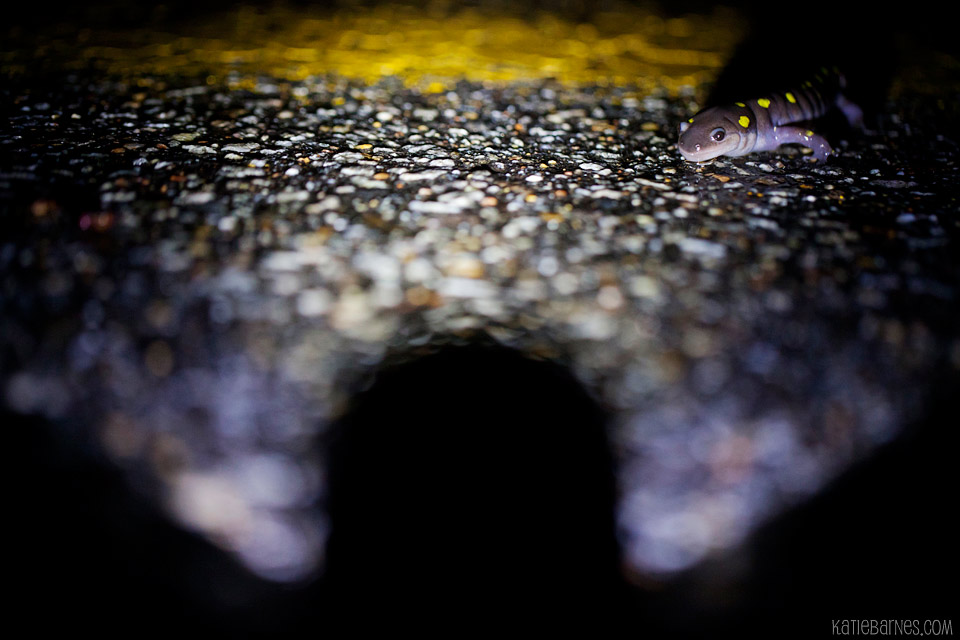
Here was my first sighting! Despite the challenge of photographing with a flashlight (and in the rain!), it’s a good thing these salamanders make their migration in the dark when few cars are out on the roads. Roads alter the habitat of many species by fragmenting their landscape and making it difficult to find mates, lay eggs, and survive oncoming traffic.
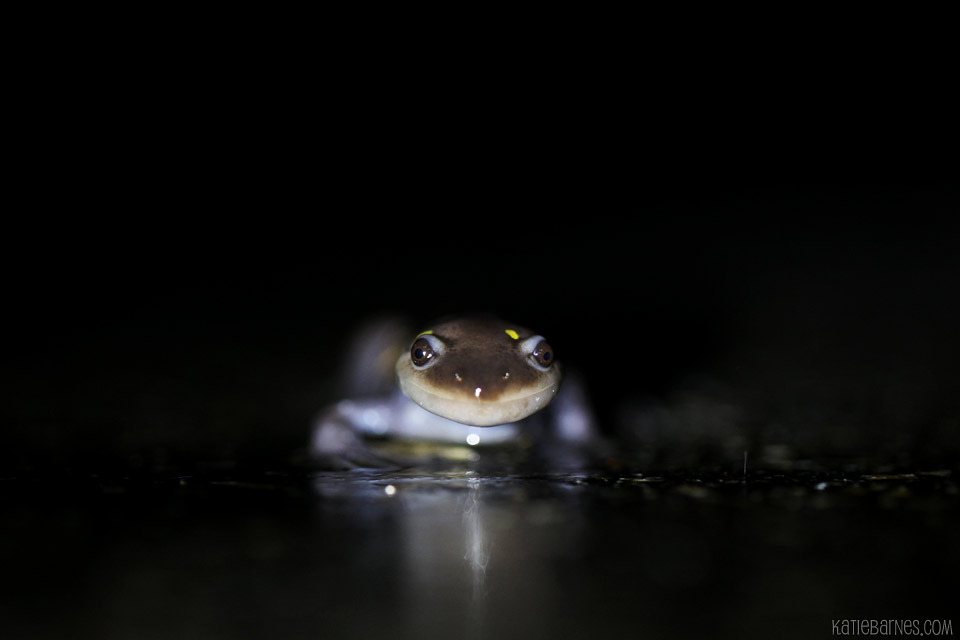
Spotted salamanders are found in deciduous forests throughout the midwest and eastern United States. They eat earthworms, snails, slugs, spiders, millipedes, and other insects. Predators of spotted salamanders include skunks, raccoons, turtles, chipmunks, squirrels, opposums and snakes.
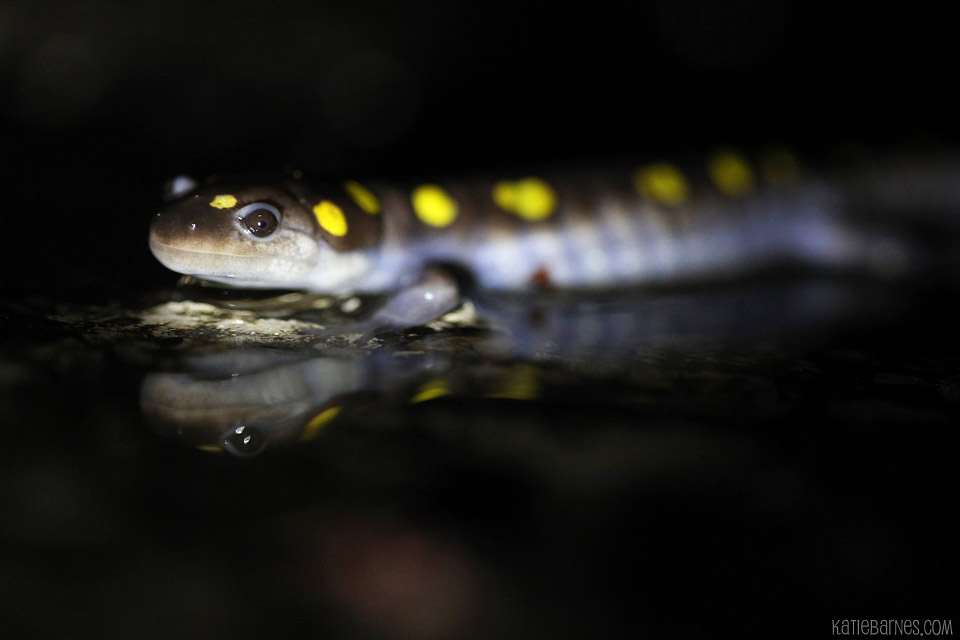
These salamanders have blueish-black or dark gray skin and two rows of yellow spots on their back. No two salamanders have the same spot pattern.
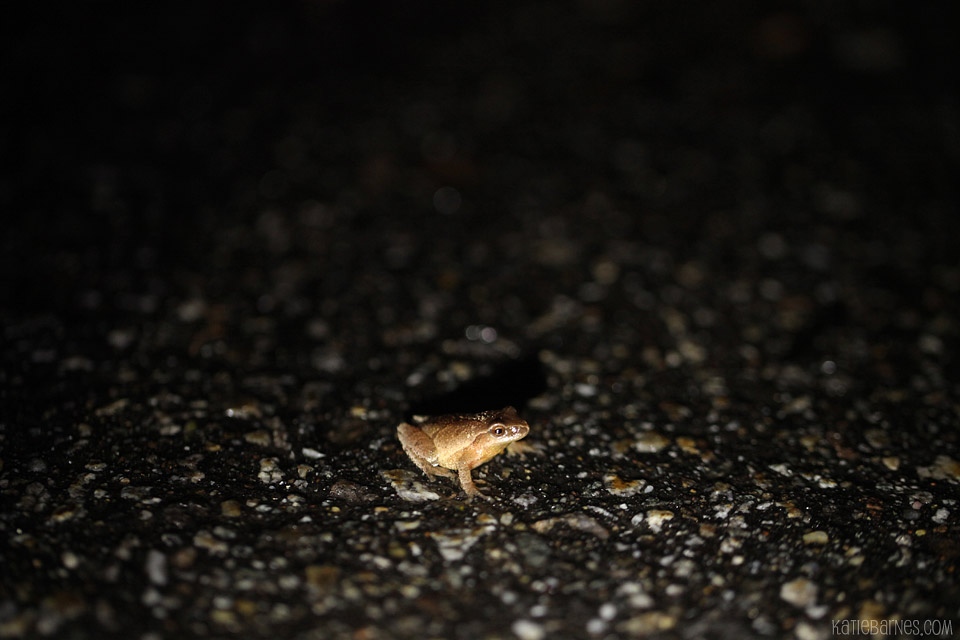
A spring peeper on Snow Pond Road. Spring peepers are nocturnal and are usually the first to announce that spring is here with a symphony of… loud peeps.
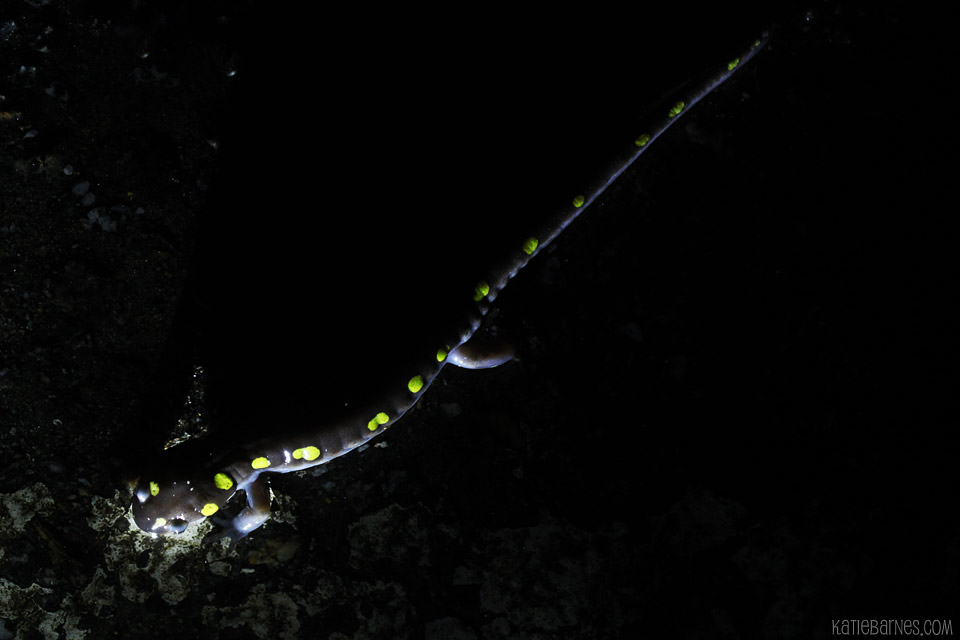
Spotted salamanders will return to the same body of water to lay their eggs year after year, and will travel up to a quarter of a mile to do so. In the wild, they can live up to 20 years.
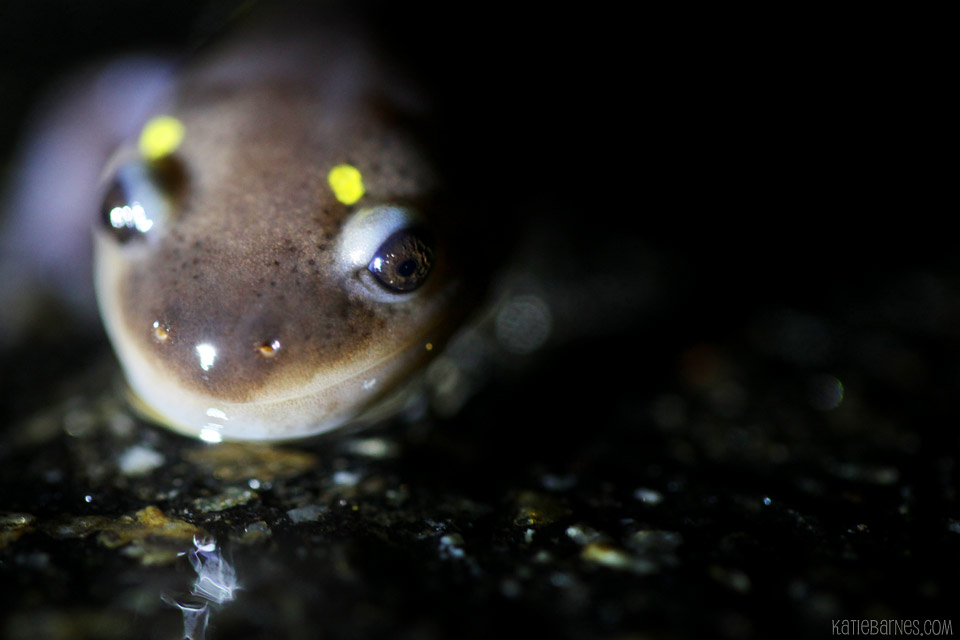
The spotted salamander is categorized as a “mole salamander”. These types of salamanders have wide, protruding eyes, prominent costal grooves, rounded tails and bulky arms.
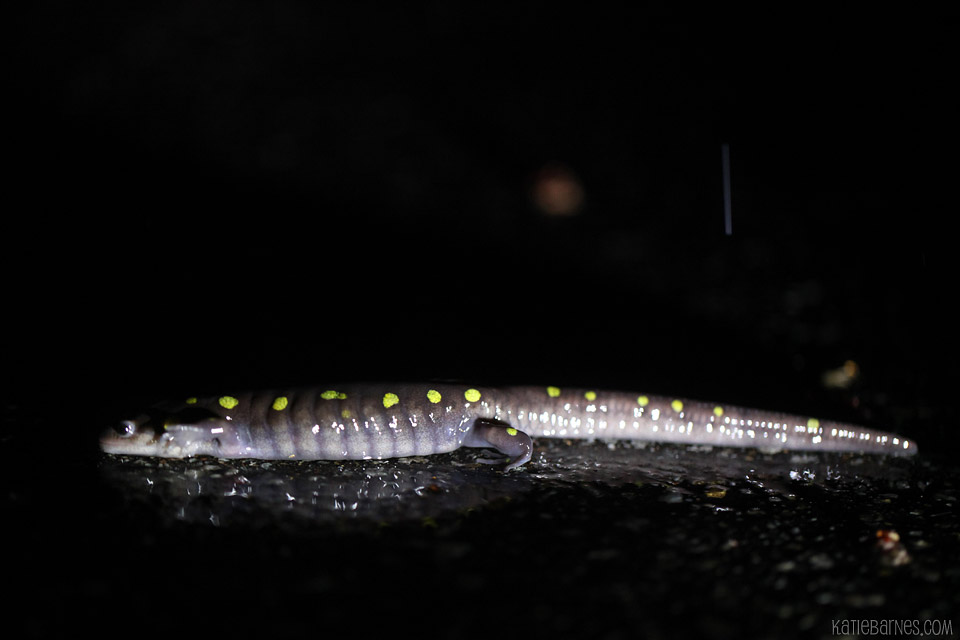
These salamanders can grow up to 9 inches long, although most are 6 – 7.5 inches long. By contrast, the largest salamander in the United States is the endangered Hellbender, which can grow up to 29 inches in length and weigh up to 5.5 pounds!
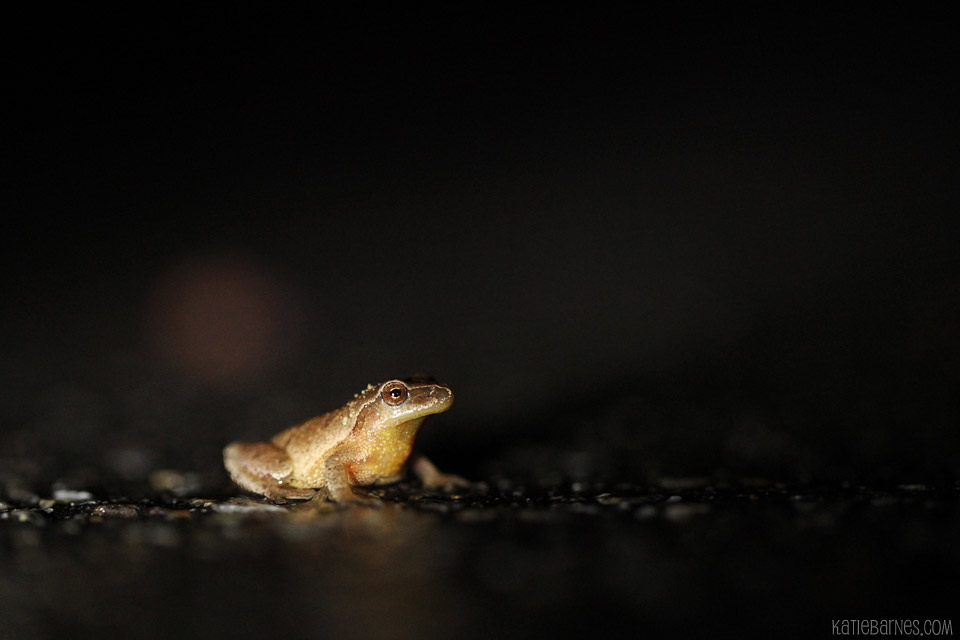 A spring peeper shows off it’s lovely yellow throat.
A spring peeper shows off it’s lovely yellow throat.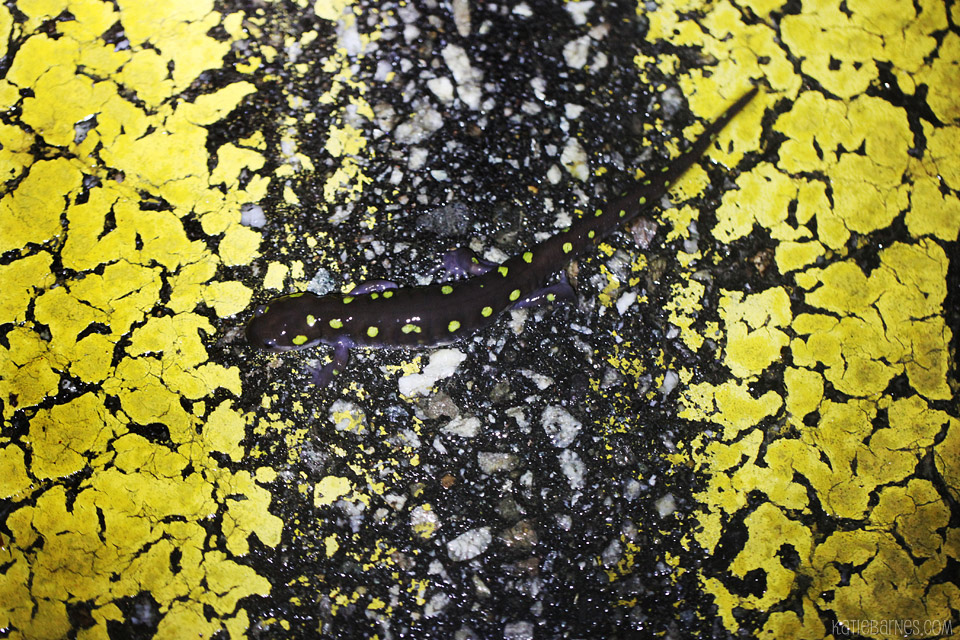
A spotted salamander makes it’s way across the yellow lines of Snow Pond Road.
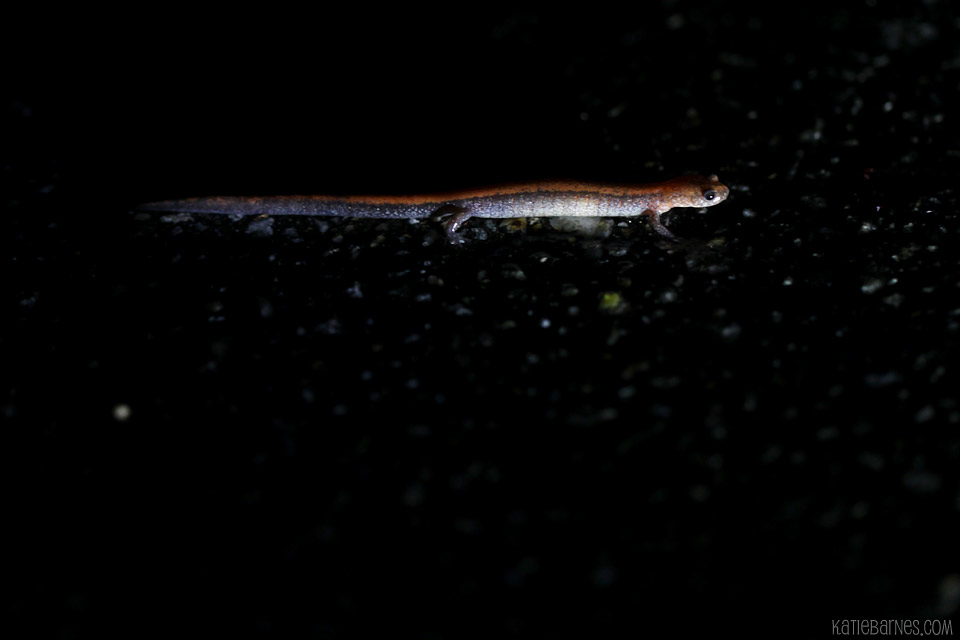
A red-backed salamander makes it’s way across the road. Red-backed salamanders are very common, and are known as a hardy species. They are often kept as pets.
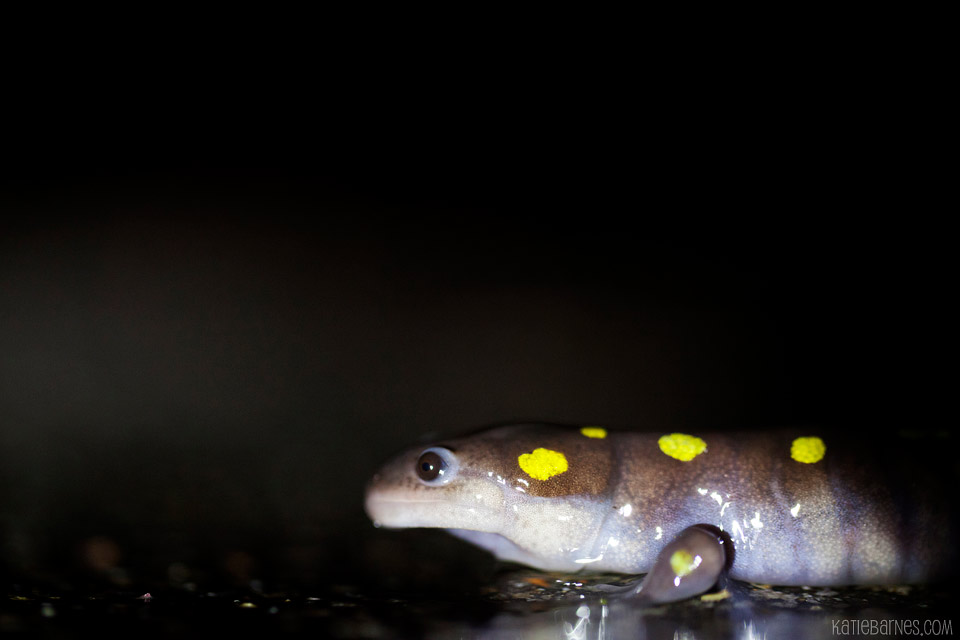
Spotted salamander populations are considered stable throughout their range, but their skin is very sensitive to changes in the environment. Rising water acidity in certain habitats is negatively affecting them in the northeast.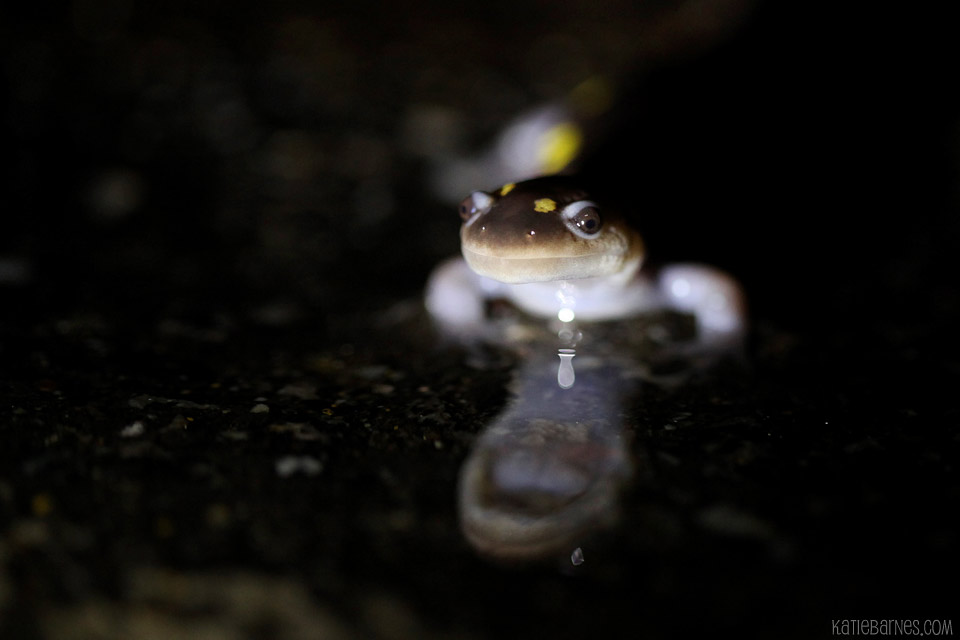
A spotted salamander makes it’s way back to the woods from a vernal pool near Snow Pond.
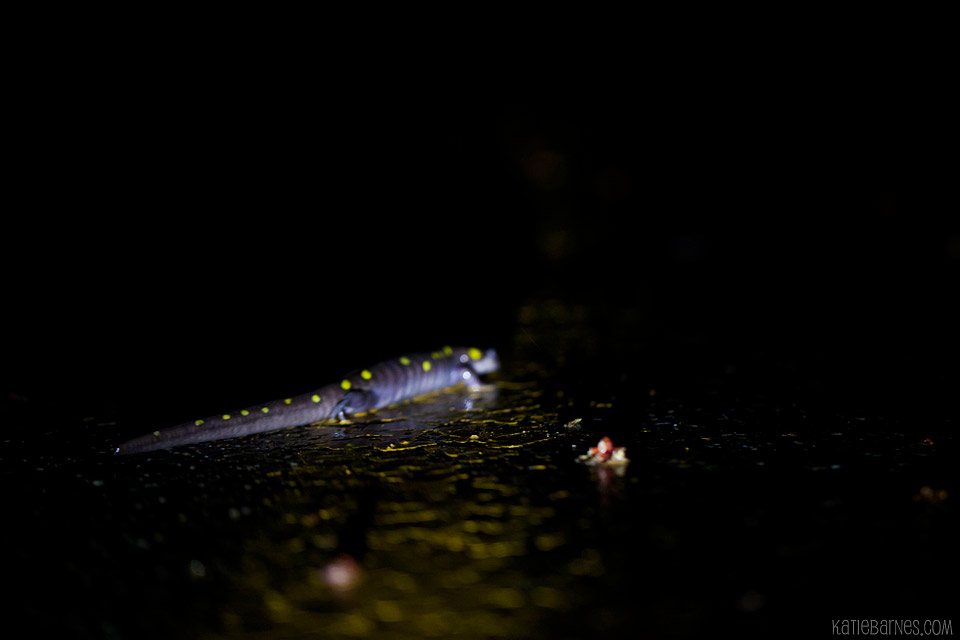 A spotted salamander crosses the yellow lines of Snow Pond Rd. In busy areas, wildlife enthusiasts will often monitor roads when high numbers of salamanders are migrating, and stop cars from killing them or carry them across the road by hand.
A spotted salamander crosses the yellow lines of Snow Pond Rd. In busy areas, wildlife enthusiasts will often monitor roads when high numbers of salamanders are migrating, and stop cars from killing them or carry them across the road by hand.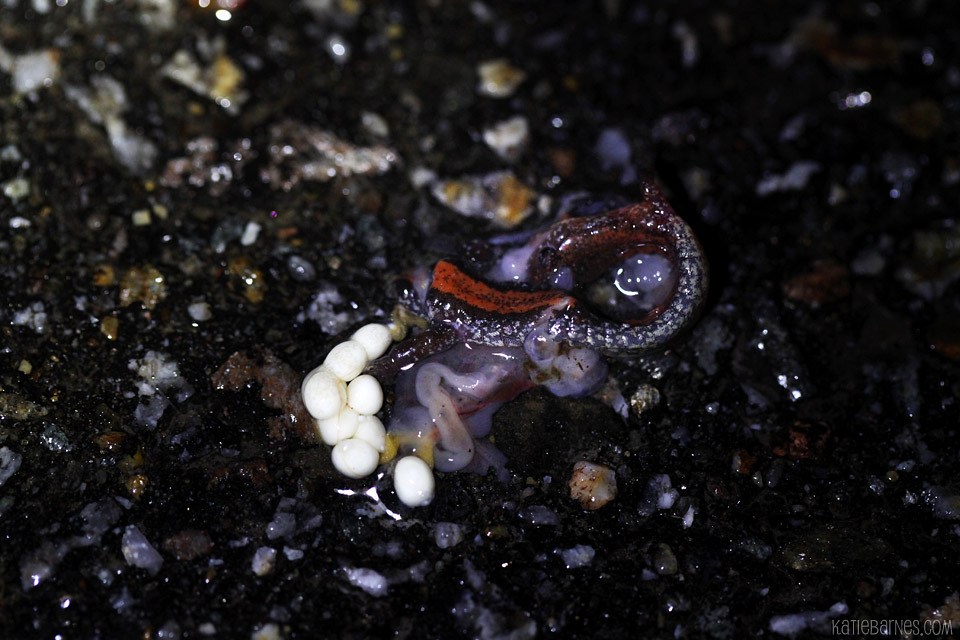
A dead red-backed salamander with eggs found on Snow Pond Road.
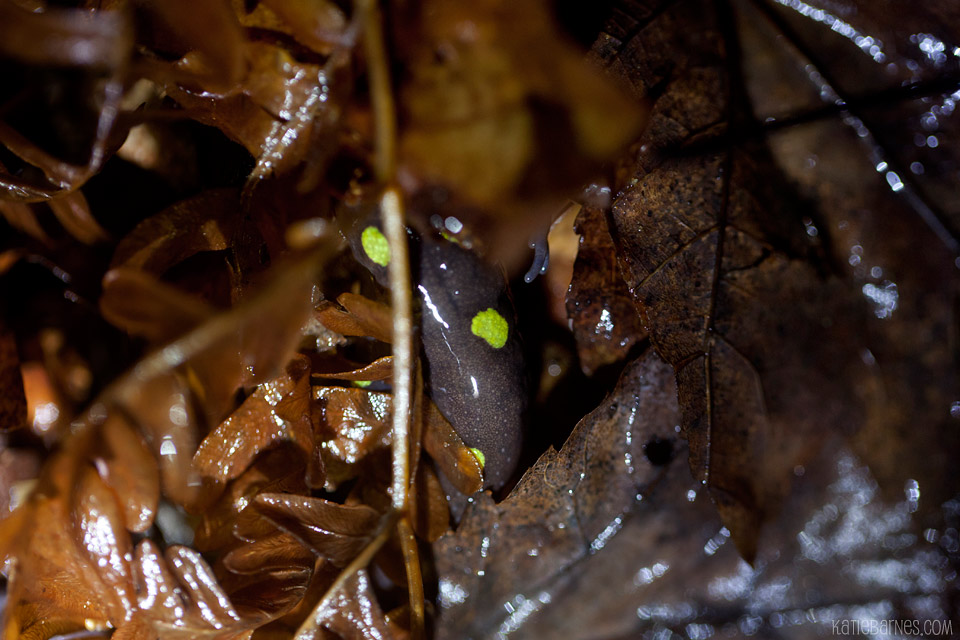
A spotted salamander begins the process of burying itself in the leaf litter after laying eggs in a vernal body of water near Snow Pond.
And last but not least, here are a few quick videos I managed to shoot of migrating spotted salamanders. Please excuse the poor focus and exposure!
How cool is this?!?! So cool. :)
No.5 Katie, I like pic. No.5
Well, 1st one is really good too.
Wow, Katie! These are incredible! I mean, you’re a fantastic wedding photographer and of all things i general, but it’s obvious where your passion is! I love that you got out there, in the RAIN, and even managed to capture some video. So awesome!
Katie these are amazing. As are you my darling daughter!
wow! they’re gorgeous! and so slow! i really love your shot of one crossing the yellow traffic lines, and also the dead, red-backed one with eggs. nice work!
Truly amazing–your pictures and your passion. Even as a kid you loved to search the tide pools at Acadia National Park.
Oh, seriously…amazing! the one with the yellow stripes on the road…. unbelievable! you couldn’t have ordered a better shoot! you are truly amazing my dear friend!
+1 on the one between the stripes in the road. Neatorama! And yay for spring.
I LOVE the photos and the videos are incredible, too. These creatures are just so cute and neat.
Interesting! Nice photographs. Thanks for these plus videos.
Hi Katie,
Your photographs capture the salamanders beautifully. Bravo!
And many thanks!
Teddi
Katie – I LOVE the spotten salamander pictures! How cool are they?! Cute little frongs, too! I like to listen to the frogs in the pond behind my house. Gee can they get LOUD!
Did you happen to take the eggs from the dead one over to the pond?
Hi Katie
you are a woan after m own heart.
I would love to experience the spotted salamander march.
Your photos are awesome.
You did a great job.
Is there amailing list to join that will let people know “that tonight is the night” ?
I live in Exeter, NH and have enough time would love to take the drive to Concord to see the march.
Do you have information?
There are a few vernal pools in my ares that I would like to check out also.
Hoping you get back to me
Kate